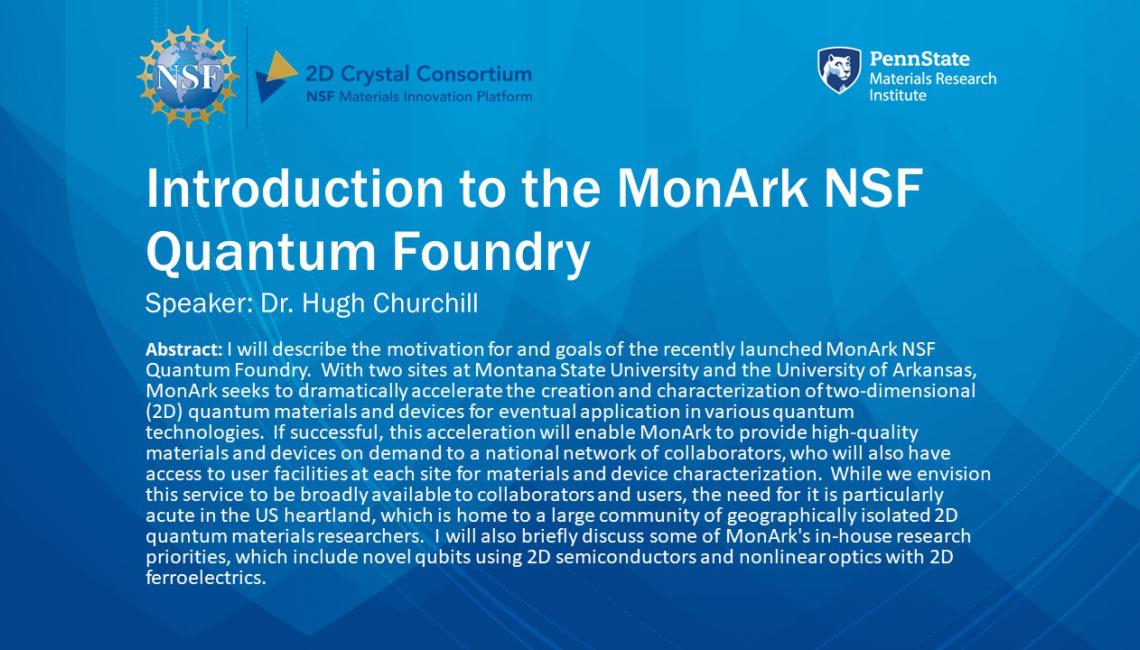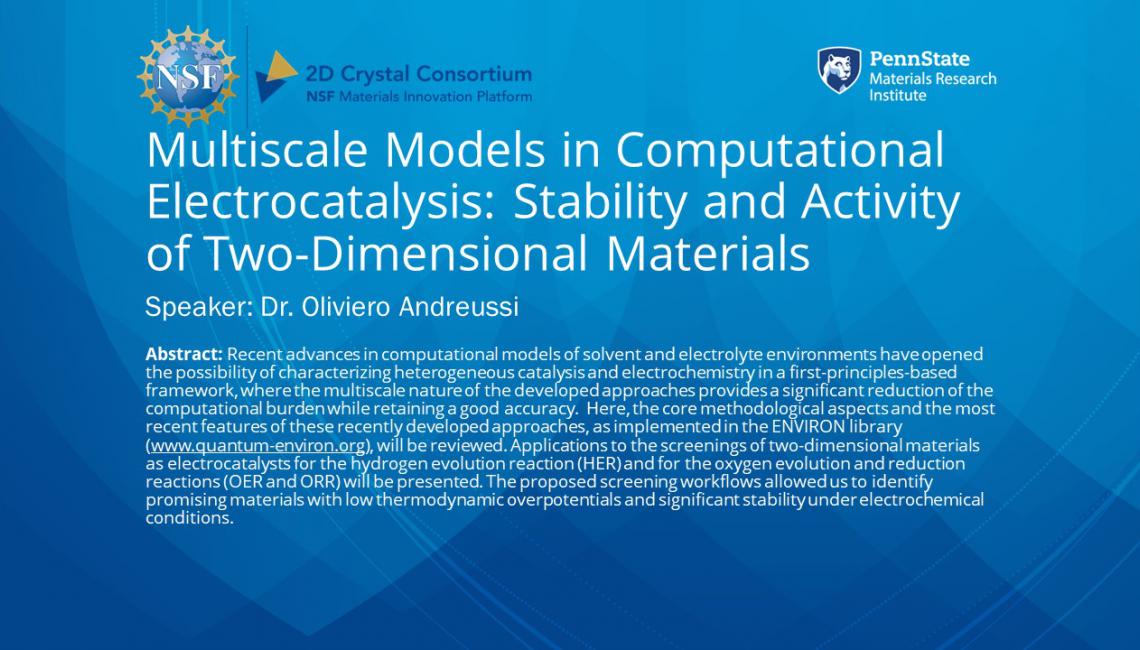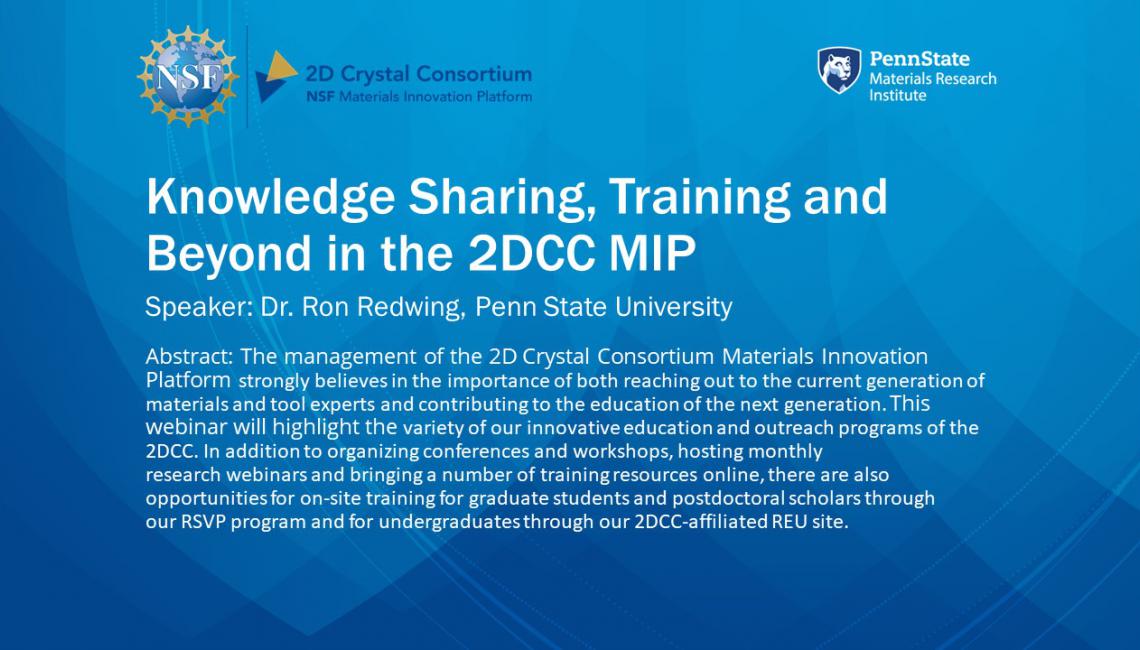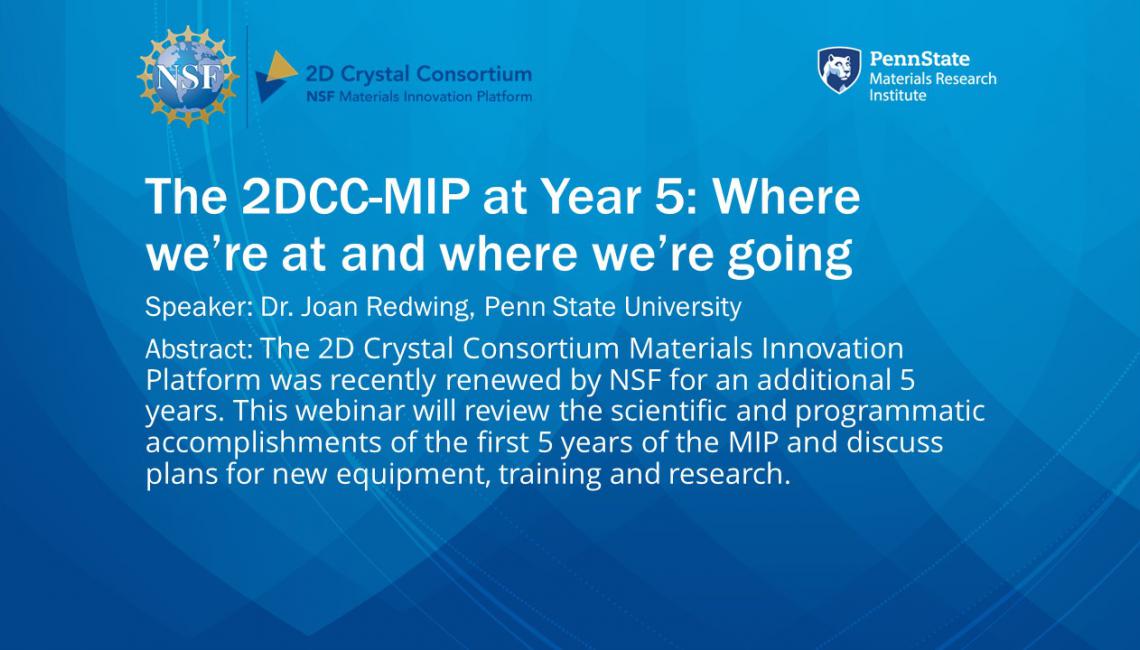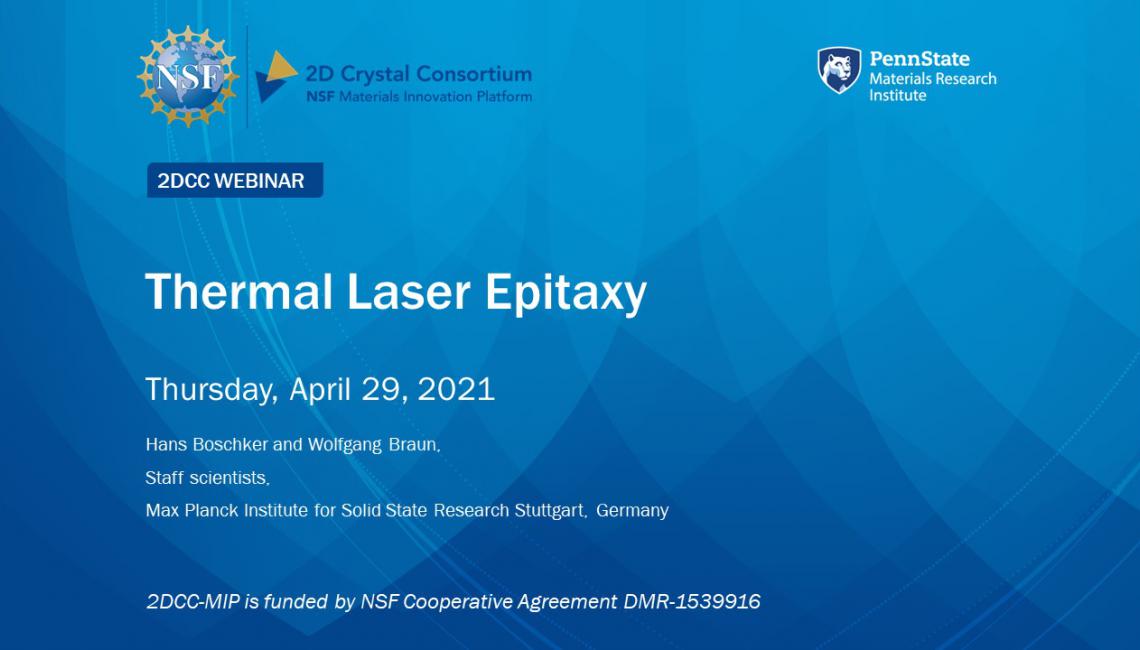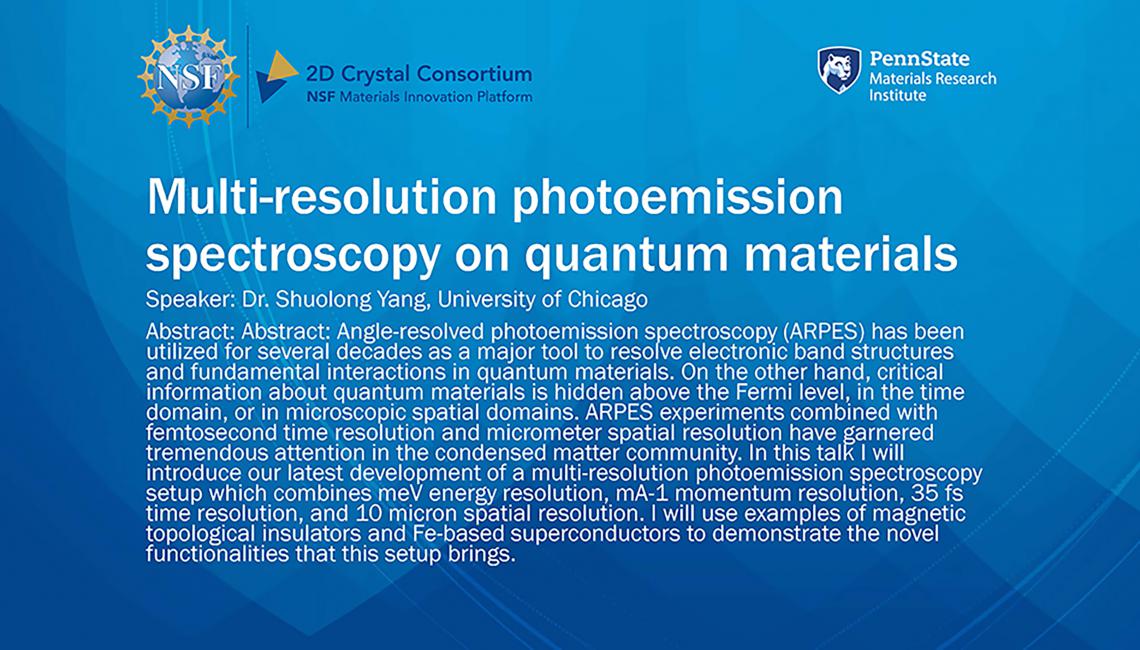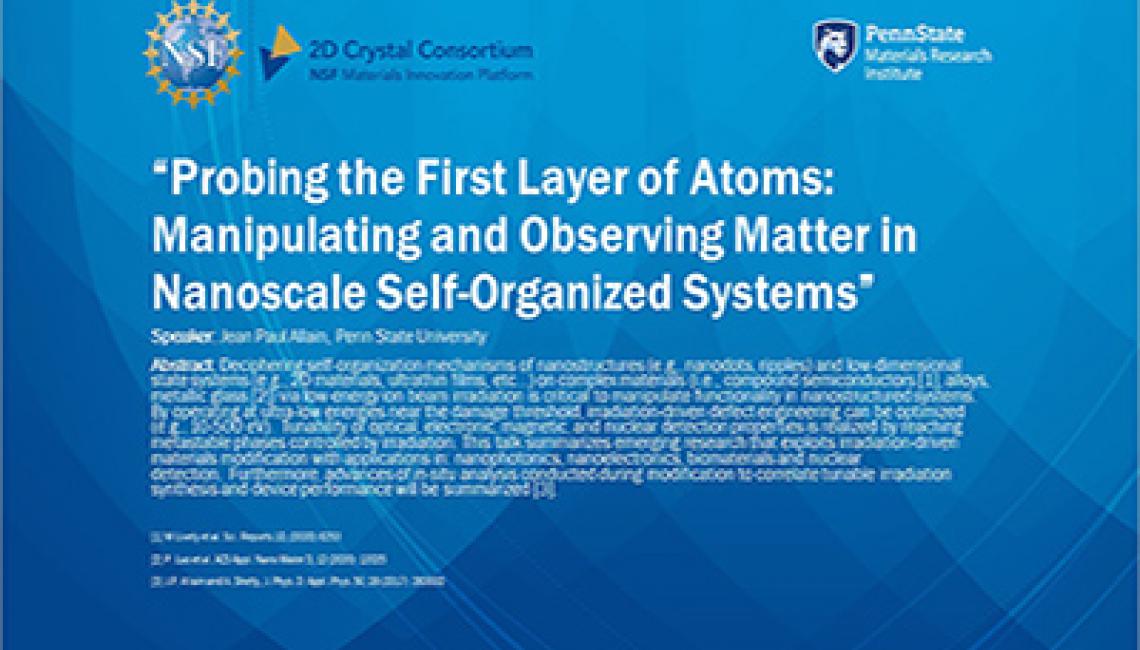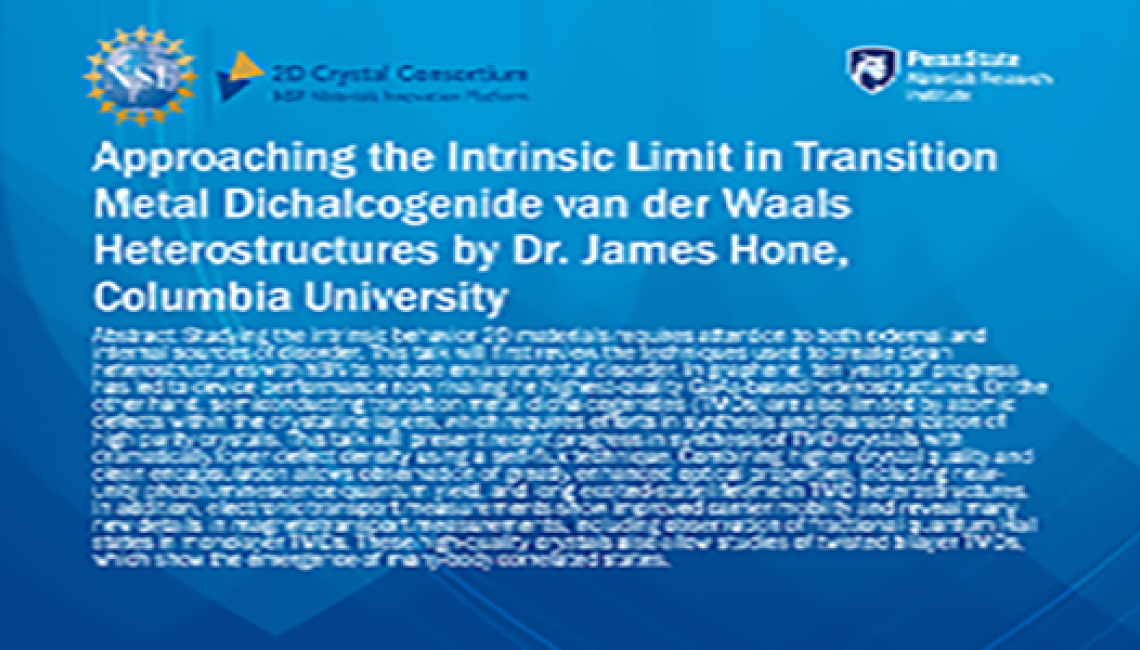Introduction to the MonArk NSF Quantum Foundry
Watch recording above or on YouTube
Date: Thursday, December 16, 2021
Speaker: Dr. Hugh Churchill
Abstract: I will describe the motivation for and goals of the recently launched MonArk NSF Quantum Foundry. With two sites at Montana State University and the University of Arkansas, MonArk seeks to dramatically accelerate the creation and characterization of two-dimensional (2D) quantum materials and devices for eventual application in various quantum technologies. If successful, this acceleration will enable MonArk to provide high-quality materials and devices on demand to a national network of collaborators, who will also have access to user facilities at each site for materials and device characterization. While we envision this service to be broadly available to collaborators and users, the need for it is particularly acute in the US heartland, which is home to a large community of geographically isolated 2D quantum materials researchers. I will also briefly discuss some of MonArk's in-house research priorities, which include novel qubits using 2D semiconductors and nonlinear optics with 2D ferroelectrics.
Multiscale Models in Computational Electrocatalysis: Stability and Activity of Two-Dimensional Materials
Watch recording above or on YouTube
Date: Thursday, November 18, 2021
Speaker: Dr. Oliviero Andreussi
Abstract: Recent advances in computational models of solvent and electrolyte environment shave opened the possibility of characterizing heterogeneous catalysis and electrochemistry in a first-principles-based framework, where the multiscale nature of the developed approaches provides a significant reduction of the computational burden while retaining a good accuracy. Here, the core methodological aspects and the most recent features of these recently developed approaches, as implemented in the ENVIRON library (www.quantum-environ.org), will be reviewed. Applications to the screenings of two-dimensional materials as electrocatalysts for the hydrogen evolution reaction (HER) and for the oxygen evolution and reduction reactions (OER and ORR)will be presented. The proposed screening workflows allowed us to identify promising materials with low thermodynamic overpotentials and significant stability under electrochemical conditions.
Knowledge Sharing, Training and Beyond in the 2DCC MIP
Watch recording above or on YouTube
Date: Thursday, October 28, 2021
Abstract: The management of the 2D Crystal Consortium Materials Innovation Platform strongly believes in the importance of both reaching out to the current generation of materials and tool experts and contributing to the education of the next generation. This webinar will highlight the variety of our innovative education and outreach programs of the 2DCC. In addition to organizing conferences and workshops, hosting monthly research webinars and bringing a number of training resources online, there are also opportunities for on-site training for graduate students and postdoctoral scholars through our RSVP program and for undergraduates through our 2DCC-affiliated REU site.
The 2DCC-MIP at Year 5: Where we’re at and where we’re going
Watch recording above or on YouTube
Date: Thursday, September 30, 2021
Speaker: Joan Redwing
Abstract: The 2D Crystal Consortium Materials Innovation Platform was recently renewed by NSF for an additional 5 years. This webinar will review the scientific and programmatic accomplishments of the first 5 years of the MIP and discuss plans for new equipment, training and research.
Thermal Laser Epitaxy
Watch recording above or on YouTube
Date:Thursday, April 29, 2021
Speaker: Hans Boschker, Woflgang Braun and Dong Yeong Kim
Staff scientists, Max Planck Institute for Solid State Research Stuttgart, Germany
Abstract: We propose and demonstrate a novel thin film epitaxy technique combining the advantages of molecular beam epitaxy (adsorption-limited growth modes, ultrapure elemental sources) and pulsed laser deposition (no limitations in source and substrate temperatures as well as background gas composition, extremely simple in-vacuum setup). In such a thermal laser epitaxy system, multiple elemental sources that can be exchanged by the same mechanism as the substrates are heated thermally and continuously by individual laser beams. Substrate heating is performed by a CO₂ laser, allowing temperatures exceeding 2000 °C.
We demonstrate the UHV deposition of practically all elements in the periodic table, including W, Ta, C, Nb and Mo, as well as the deposition of oxide films from elemental metal sources in 10% ozone, 90% oxygen background pressures as high as 10⁻² hPa.
The advantages and promises of this clean, simple, fast and versatile new technique are presented and discussed in detail.
Multi-Resolution Photoemission Spectroscopy on Quantum Materials
Watch recording above or on YouTube
Date: Thursday, March 25, 2021
Speaker: Dr. Shuolong Yang
Abstract: Angle-resolved photoemission spectroscopy (ARPES) has been utilized for several decades as a major tool to resolve electronic band structures and fundamental interactions in quantum materials. On the other hand, critical information about quantum materials is hidden above the Fermi level, in the time domain, or in microscopic spatial domains. ARPES experiments combined with femtosecond time resolution and micrometer spatial resolution have garnered tremendous attention in the condensed matter community. In this talk I will introduce our latest development of a multi-resolution photoemission spectroscopy setup which combines meV energy resolution, mA-1 momentum resolution, 35 fs time resolution, and 10 micron spatial resolution. I will use examples of magnetic topological insulators and Fe-based superconductors to demonstrate the novel functionalities that this setup brings.
Bio: Prof. Shuolong Yang obtained his B.S. in Physics at Stanford University in 2010. He continued to finish his Ph.D. in Applied Physics at Stanford in 2016. Before starting at the University of Chicago, he was a postdoctoral fellow at Cornell University, working at the intersection between condensed matter physics and materials science. Prof. Yang has been the recipient of several prestigious scholarships and fellowships, including the Larry Yung Scholarship, the J. E. Wallace Sterling Award for Scholastic Achievement at Stanford, and the Stanford Graduate Fellowship. He was awarded the Kavli postdoctoral fellowship at Cornell.
Probing the First Layer of Atoms: Manipulating and Observing Matter in Nanoscale Self-Organized Systems
Watch recording above or on YouTube
Date: Thursday, February 25, 2021
Abstract: Deciphering self-organization mechanisms of nanostructures (e.g., nanodots, ripples) and low-dimensional state systems (e.g., 2D materials, ultrathin films, etc...) on complex materials (i.e., compound semiconductors [1], alloys, metallic glass [2]) via low-energy ion beam irradiation is critical to manipulate functionality in nanostructured systems. By operating at ultra-low energies near the damage threshold, irradiation-driven defect engineering can be optimized (e.g., 10-500 eV). Tunability of optical, electronic, magnetic, and nuclear detection properties is realized by reaching metastable phases controlled by irradiation. This talk summarizes emerging research that exploits irradiation-driven materials modification with applications in: nanophotonics, nanoelectronics, biomaterials and nuclear detection. Furthermore, advances of in-situ analysis conducted during modification to correlate tunable irradiation synthesis and device performance will be summarized [3].
[1] M Lively et al. Sci. Reports 10, (2020) 8253
[2] P. Luo et al. ACS Appl. Nano Mater 3, 12 (2020) 12025
[3] J.P. Allain and A. Shetty, J. Phys. D: Appl. Phys. 50, 28 (2017) 283002
Bio: Jean Paul Allain is the inaugural head of the Ken and Mary Alice Lindquist Department of Nuclear Engineering. He holds the Lloyd and Dorothy Foehr Huck Chair in Plasma Medicine in the Huck Institutes of the Life Sciences, and he is a faculty co-hire of the Institute for Computational and Data Sciences. Allain was professor and associate head of graduate programs in the Department of Nuclear, Plasma and Radiological Engineering at the University of Illinois at Urbana-Champaign (UIUC) from 2013 until 2019 and was assistant and associate professor in nuclear engineering at Purdue University from 2007 to 2013. His group’s research areas include advanced functional bio interfaces, advanced nuclear fusion interfaces, multi-scale computational irradiation surface science, nanostructured functional materials, adaptive and self-healing interfaces, sustainable nanomanufacturing, and in-situ, in-operando material surface diagnostics.
Approaching the Intrinsic Limit in Transition Metal Dichalcogenide van der Waals Heterostructures
Watch recording above or on YouTube
Date: Thursday, February 4, 2021
Speaker: Dr. James Hone, Columbia University
Abstract: Studying the intrinsic behavior 2D materials requires attention to both external and internal sources of disorder. This talk will first review the techniques used to create clean heterostructures with hBN to reduce environmental disorder. In graphene, ten years of progress has led to device performance now rivaling he highest-quality GaAs-based heterostructures. On the other hand, semiconducting transition metal dichalcogenides (TMDs) are also limited by atomic defects within the crystalline layers, which requires efforts in synthesis and characterization of high purity crystals. This talk will present recent progress in synthesis of TMD crystals with dramatically lower defect density using a self-flux technique. Combining higher crystal quality and clean encapsulation allows observation of greatly enhanced optical properties, including near-unity photoluminescence quantum yield, and long excited-state lifetime in TMD heterostructures. In addition, electronic transport measurements show improved carrier mobility and reveal many new details in magnetotransport measurements, including observation of fractional quantum Hall states in monolayer TMDs. These high-quality crystals also allow studies of twisted bilayer TMDs, which show the emergence of many-body correlated states.
James Hone is currently Wang Fong-Jen Professor of Mechanical Engineering at Columbia University, and director of PAQM, Columbia’s Materials Science Research and Engineering Center (MRSEC). He received his BS in physics from Yale in 1990, and PhD in experimental condensed matter physics from UC Berkeley in 1998, and did postdoctoral work at the University of Pennsylvania and Caltech, where he was a Millikan Fellow. He joined the Columbia faculty in 2003.
